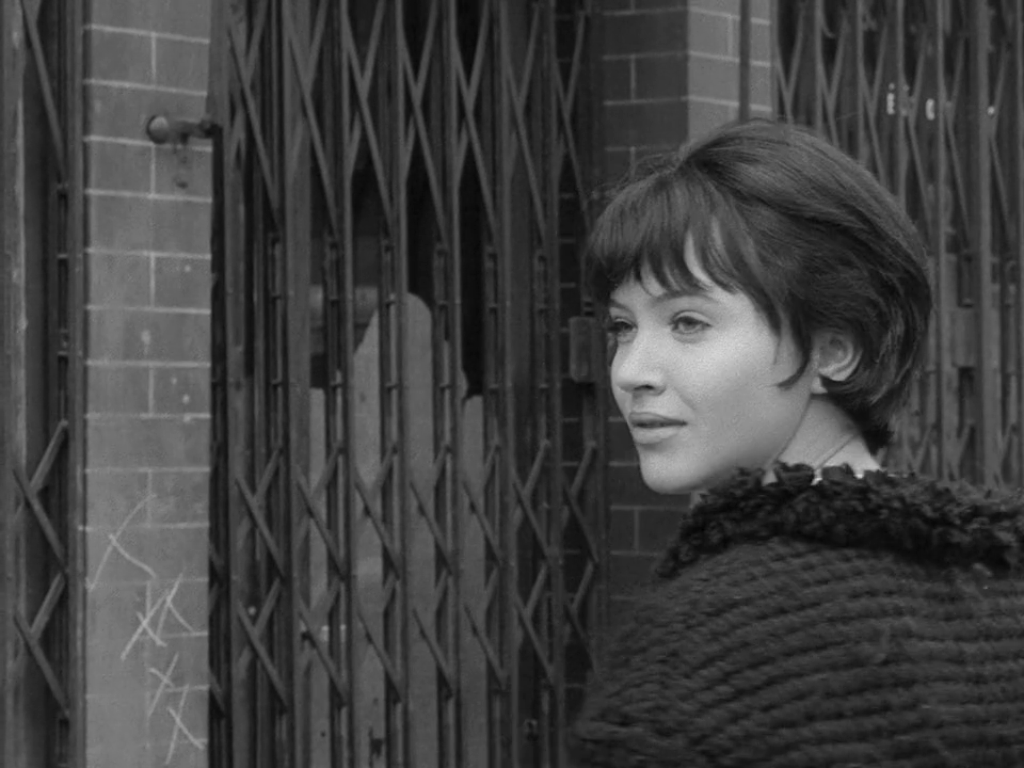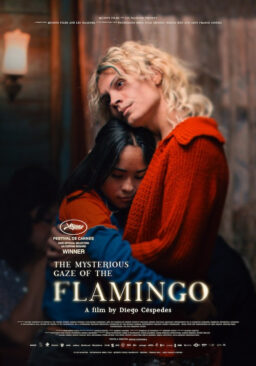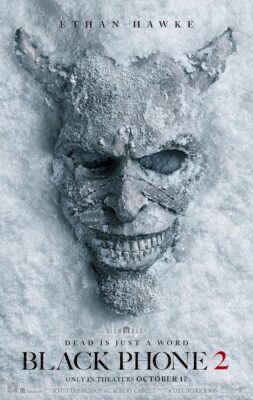Made in 1962, “Vivre sa vie” (a.k.a. “My Life to Live”), the fourth feature film from Jean-Luc Godard, tells the story of Nana, a beautiful young French woman who impulsively decides to leave her husband and infant son in order to pursue her dreams of becoming an actress. Over the course of the twelve distinct episodes that make up the film, we observe her as she goes from her dreams of stardom to working in a record store in order to make a living to becoming a prostitute in order to survive. In the final segment, her pimp has agreed to sell her to another pimp but during the transaction, there is a brief exchange of gunfire and Nana gets caught in the crossfire, eventually dying alone in the street from her wounds while the two men run away.
That Nana would die at the end of her story is perhaps not the most shocking of developments—from his very first feature, “Breathless” (1959), Godard showed that he was not afraid to end his stories on dark and violent notes—but no matter how many times one has seen the film over the years, the devastating emotional impact of the scene remains as strong as ever. Although Godard’s staging of the scene is undeniably effective, the key to why the movie in general and that scene in particular are so successful is the presence of Anna Karina, whose work here is one of the greatest and most devastating in the history of cinema. The character she is playing may sound like an unbearable and potentially unlikable collection of cliches on paper but Karina invests her with such heart and genuine emotion as she endures her gradual descent that we are always holding out hope that something will work out for her and we are therefore doubly devastated by her demise. Even Godard, someone who is not exactly known for his sentimental side, seemed to knocked for a loop by the demise of his own creation—after bearing witness to Nana’s death, he has cinematographer Raoul Coutard look down at the ground as if the film itself cannot bear to look at what has happened to her. With the possible exception of the passing of Slim Pickens in “Pat Garrett & Billy the Kid,” this sequence remains the most powerful and heartbreaking death scene that I have seen in a lifetime of moviegoing and it is due almost entirely to the raw power of Karina’s performance.
Now I wake up this morning to the news that Karina has passed away in Paris from cancer at the age of 79. Although the particulars of her death were perhaps not that shocking, to read the words that she was gone still came like a punch to the gut. Not only was she one of my favorite actresses of all time—I got to interview her once and it remains one of the highlights of my professional career—she was and will no doubt remain one of the true icons of French cinema. Although filmmakers like Godard and Francois Truffaut were the minds behind the famous Nouvelle Vague cinema movement, it could be argued that Karina gave it both the face, thanks to her mesmerizing beauty, and its heart, thanks to her equally stunning talents as an actress. And while she will always be recognized most for her films with Godard, she would go on to have a long and varied career that would find her working for a number of famed directors and even saw her writing and directing two films of her own, “Vivre Ensemble” (1973) and “Victoria” (2008) which would prove to be her last film. In addition, she recorded a couple of albums, scoring a hit with the Serge Gainsbourg songs “Sous le soleil excitement” and “Roller Girl,” and wrote four novels; “Vivre Ensemble” (1973), “Golden City” (1983), “On n’achete pas le soleil” (1988) and “Jusqu’au bout du hazard” (1998).
Born Hanne Karin Bayer in Denmark on September 22, 1940, Karina had what she would describe as being a difficult childhood, living first with her maternal grandparents and then spending time in foster care before being returned to her mother. In her teens, she began singing in cabarets in Denmark appeared in a short film that would go on to win a prize at Cannes. At 17, following an argument with her mother, she moved to Paris and soon began finding work as a model, appearing in magazines like “Elle” and meeting figures like Coco Chanel, who, it is said, helped her to change her name to Anna Karina. One of the advertisements that she did, a Palmolive ad in which she was posed in a bathtub in a way that suggested that she was naked. This ad caught the eye of film critic and emerging filmmaker Jean-Luc Godard, who was then planning his first feature, “Breathless,” and he met with her to offer her a small part in that groundbreaking feature. However, the role called for nudity, which Karina refused to do, and she turned down the part, which ended up being removed from the film anyway. Nevertheless, a year later, Godard met with her again to offer her a part in his next film, “Le Petit Soldat” (1960) and this time, she agreed—since she was still under 21 at the time, she had to reconnect with her estranged mother in order to convince her to sign the contract for her.
This began one of the most fruitful actor-director collaborations in all of cinema. Between 1960 and 1966, they would work together on eight films that would help to revolutionize French cinema and make her an international star. In “Le Petit Soldat” (1960), set during the time of Algeria’s fight for independence from France, she played a member of a leftist organization who falls in love with a man fighting for the opposing side—the end result was such a hot potato that its release was delayed for more than three years by French censors. Their next film, “Une Femme est une femme” (“A Woman is a Woman”) (1961) was a definite change of pace, a gorgeous and charming homage to the classic MGM musicals (marking Godard’s first use of color and CinemaScope) in which she played Angela, a stripper who yearns to have a baby with her lover, Emile (Jean-Claude Brialy). Not particularly enthused by the idea, Emile jokingly suggests that his best friend Alfred (Jean-Paul Belmondo), who has also professed his love for her, do the deed and complications arise when she agrees to the idea. Once again, Karina takes a potentially troubling character and fills her with life, energy and spirit and shows that she can carry a tune as well—her efforts led to her performance winning the Silver Bear for Best Actress at the Berlin International Film Festival.
After “Vivre sa vie,” they made “Bande a part” (“Band of Outsiders”) (1964), in which she plays a student who becomes involved with two men (Sami Frey and Claude Basseur) and devises a half-assed plan to rob her aunt of a large stash of money that is supposedly in her home. Their plot seems to be driven more by a desire to emulate their favorite movie heroes than to steal the money and it is therefore appropriate that the film would contain a couple of sequences that would themselves be celebrated and emulated by successive generations of fans. In one, the three are sitting in a crowded cafe and spontaneously break out in a dance to the musical stylings of Michel Legrand in a moment that really has no bearing on the plot per se but which I cannot imagine the film existing without. (In later years the sequence would inspire similar scenes in films like Quentin Tarantino’s “Pulp Fiction” and Hal Hartley’s “Simple Men.”) In the other, the three attempt to break the alleged world record for running from one end of the Louvre to the other, a gambit that would be referenced in films like “The Dreamers” (2003) and “Faces Places” (2017) and has no doubt inspired many a visitor to try to beat their time (9 minutes, 43 seconds) themselves.
In 1961, following the making of “Le Petit Soldat,” Godard and Karina were married and while their cinematic unions were celebrated around the world, their relationship off-screen was a volatile and tumultuous one, eventually ending in divorce in 1965. No doubt mirroring the darkening of their marriage, her roles in his films became darker as well. In “Pierrot Le Fou” (1965), she plays the ex-girlfriend of a man (Jean-Paul Belmondo) who impulsively decides to leave his wife, family and job as a TV broadcaster and run off with his old flame, who herself is being pursued by criminals. The two embark on their own crime spree but life on the run begins to wear upon them and their relationship deteriorates before culminating in a literally explosive finale. That same year, the dystopian sci-fi drama “Alphaville,” she plays the programmer of an all-powerful computer that controls the world of Alphaville and outlaws all free thought or emotion—when a private detective (Eddie Constantine) arrives on the scene, he falls in love with her and this outburst of emotion sends the city into upheaval. In “Made in USA” (1966, she plays a woman who discovers that her lover is dead and decides to investigate the crime, leading to encounters with a number of criminals. (Because Godard essentially lifted the storyline from a Donald E. Westlake novel without permission, the film was virtually unseen in America after playing at the 1967 New York Film Festival until it was finally released in 2009.) In their final work together, “The Oldest Profession” (1967), a film featuring contributions from a number of international filmmakers exploring the topic of prostitution throughout the ages, she appeared in a segment set in a futuristic world and while she remains as iconic as ever, this is by far the least of her appearances in Godard’s films.
By this time, though, Karina had long since established herself as an actress outside of her work with Godard, including appearances in films from other members of the Nouvelle Vague movement. In 1966, she had perhaps her best role in a non-Godard film with her performance in the title role in Jacques Rivette’s “The Nun,” a powerful and then-scandalous work in which she plays a young woman in eighteenth-century France who is forced to take her vows to become a nun and finds herself being treated in a variety of ways from the mothers superior that she serves under during the course of the film. After being difficult to see for many years, “The Nun” was reissued earlier this year and proved to be just as powerful as ever, thanks in no small part to Karina’s quietly devastating way in which she guides viewers through the cruelties and occasional kindness that she encounters along the way. Other noted directors that she worked with around this time include Luchino Visconti (“The Stranger”), Volker Schlondorff (“Man on Horseback”), George Cukor (“Justine”), Tony Richardson (“Laughter in the Dark”) and Rainer Werner Fassbinder (“Chinese Roulette”).
As time passed, she made fewer appearances on screen but when she did turn up in the occasional film, it quickly became apparent that the luminous star quality that helped her make such an immediate connection with moviegoers at the start of her career had not dimmed in the slightest. In 1995, she reunited with Rivette for “Up Down Fragile”), an epic-length homage to the second-tier musicals that MGM cranked out in the Fifties (with Rivette citing “Give a Girl a Break” (1953) as a key influence) in which she plays a key supporting role as a cabaret singer who is one of the points connecting the story’s three heroines. In 2002, Jonathan Demme elected to remake the classic comedy-thriller “Charade” as “The Truth About Charlie”and then chose to use the film as an opportunity to pay homage to the Nouvelle Vague by filling it with references and cameo appearances. The film was poorly received by critics and ignored by audiences but while it is undeniably flawed (to say that Mark Wahlberg is no Cary Grant is one of the great understatements of all time), it does have it charms as a French New Wave tribute and the most striking of all of these moments is the brief appearance by Karina, the most iconic face of the movement, as a tango instructor—she makes such an impression in her brief appearance that she leaves the film, you want to go as well and follow her story.
Now Karina herself is gone and with her goes a piece of genuine living history. From the moment I first saw her in “Vivre sa vie,” she instantly became one of my all-time favorite actresses and my admiration for her and her work has only grown since then. The word “legendary” is too often applied to too many people—I am guilty of doing that as anyone else—but if there is a movie star deserving of being called a legend, Karina is the one. Her work, of course will live on—the films she did with Godard alone will continue to be discussed for as long as people continue to discuss such things—and if there is a bright side to her passing, it is the hope that the news of her death may spur new interest in her work, both with Godard and on her own. Myself, I will most likely mark her passing very soon with yet another viewing of “Vivre sa vie” and while shedding a tear during that film may not be totally unheard of in my experience, there is an excellent chance that they may come earlier than usual this time.












